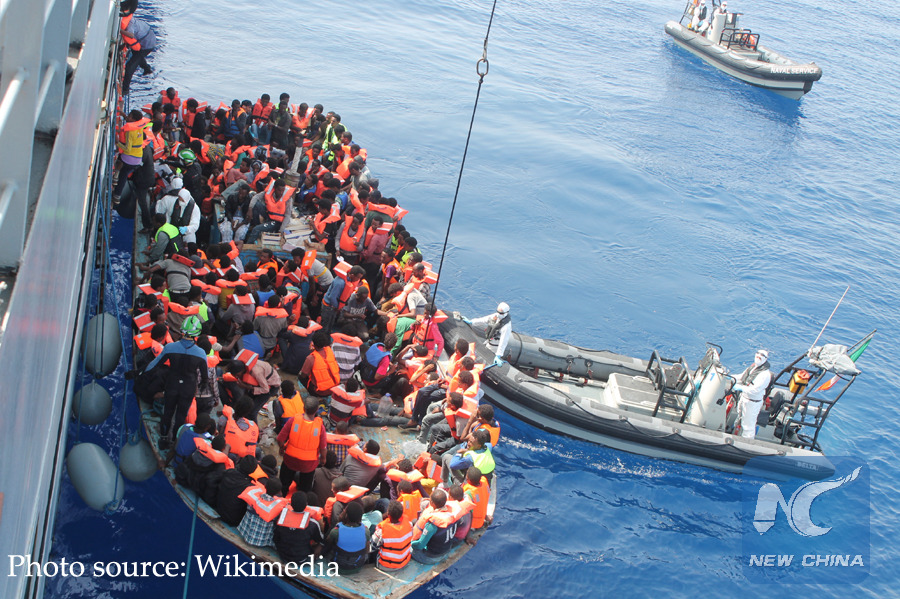
Irish Naval personnel rescuing migrants as part of Operation Triton on June 15 of 2015 (Irish Defense Forces).
GENEVA, Nov. 24 (Xinhua) -- Europe's Mediterranean border is "by far the world's deadliest", the UN migration agency, IOM, said Friday, citing a new study reviewing four decades of evidence.
The study titled Four Decades of Cross-Mediterranean Undocumented Migration to Europe: A Review of the Evidence, was carried out by the Global Migration Data Analysis Center, said IOM spokesperson Jorge Galindo.
"The report states that at least 33,761 migrants were reported to have died or gone missing in the Mediterranean between 2000 and 2017, as of June 30," Galindo said.
IOM also reported Friday that 161,010 migrants and refugees entered Europe by sea in 2017 through Nov. 24, with about 75 percent arriving in Italy and the remainder divided between Greece, Cyprus and Spain.
This compares with 345,831 arrivals across the region through the same period last year.
Professor Philippe Fargues of the European University Institute, the study's author, is quoted as saying that that number of deaths cited over the past 18 years likely under-reports the actual scale of the human tragedy.
That is despite the data that the record number of migrant deaths may have begun to subside in 2017 due in part to cooperation between the EU and Turkey, and now Libya, to stem migrant flows.
"Stopping migration and eradicating deaths at sea may [be] conflicting objectives. Shutting the shorter and less dangerous routes can open longer and more dangerous routes, thus increasing the likelihood of dying at sea," Fargues states in the report.
The report analyzes irregular migration across the Mediterranean since the 1970s. It highlights that irregular arrivals to Europe have increased in response to more restrictive migration policies by some European countries.
Prime examples from the report are the irregular migration from North Africa and Turkey to Europe in the 1970s, after visa requirements were introduced for temporary labor migrants from these regions.
Absence of legal pathways for asylum-seekers and refugees to travel to Europe and seek asylum also increased arrivals by sea along the Eastern, Central and Western Mediterranean routes from 2009, said the report.

